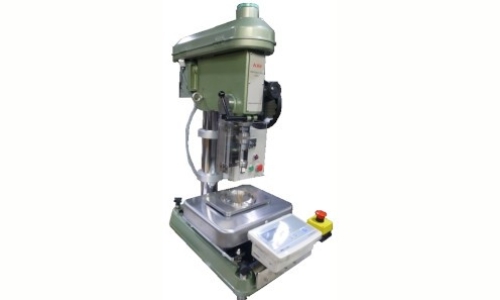As latex is subject to various mechanical impacts while it goes through processes such as transport, mixing, agitation and coating, it needs to have enough stability to withstand those impacts. For example, latex receives great shearing stress in making and application of latex paint as it is mixed with pigment paste, agitated, and applied on paper as latex paint. It also receives shearing force in paper converting in the processes of adding pigments and coating, and in fiber processing, in the drawing process. When given great kinetic energy through mechanical impacts, latex particles contact and fuse with each other to form aggregates, overcoming inter-particle potential energy barriers. Emergence of these aggregates in fiber processing fails the expected function of latex. Resistance of latex against mechanical impacts is referred to as mechanical stability, which is one important characteristic of latex. This machine is a mechanical stability tester for synthetic rubber latex that measures the mass of the coagulum content generated in specimen latex. When testing, it applies shearing force on specimen latex with its rotor revolving under a certain load.
Translation provided by Google
Maron Mechanical Stability Tester - OpTest
Home/Paper, Tissue, & Board/Maron Mechanical Stability Tester
Maron Mechanical Stability Tester
| Product Name | Maron Mechanical Stability Tester |
| Product Code | KRK-2312-I |
| Standards/Methods | JIS K-6392-1995 |
| Manufacturer | Kumagai Riki Kogyo Co., Ltd. ( KRK ) |
| Availability from OpTest | Exclusive to Canada, USA, and Mexico |
Main Shaft Rotation Speed
1,000±20rpm (standard)
500, 1,500, 2,000rpm (optional)
Load platform scale 500N, minimum increment 5N
Time 30-minutes timer
Accessory polyethylene liner
Power Source 100/110VAC 50/60Hz 10A
Outer Dimensions 480×590×890mm
Instrument Weight 79kg


